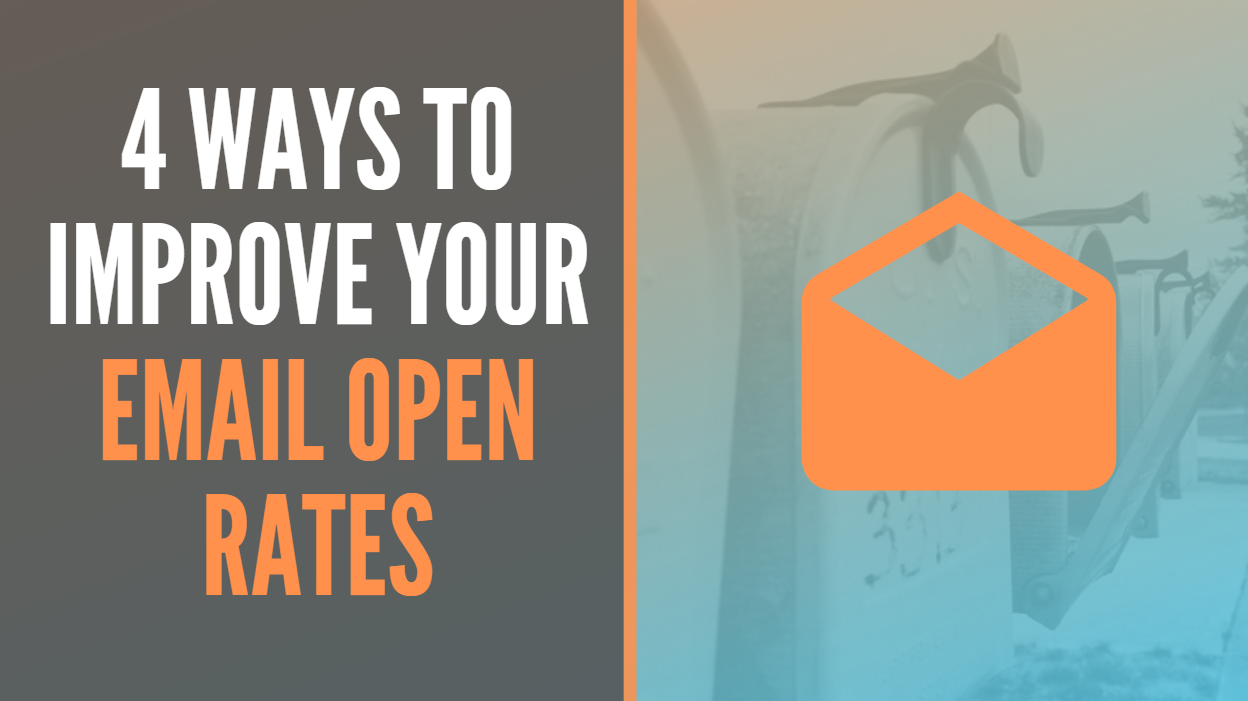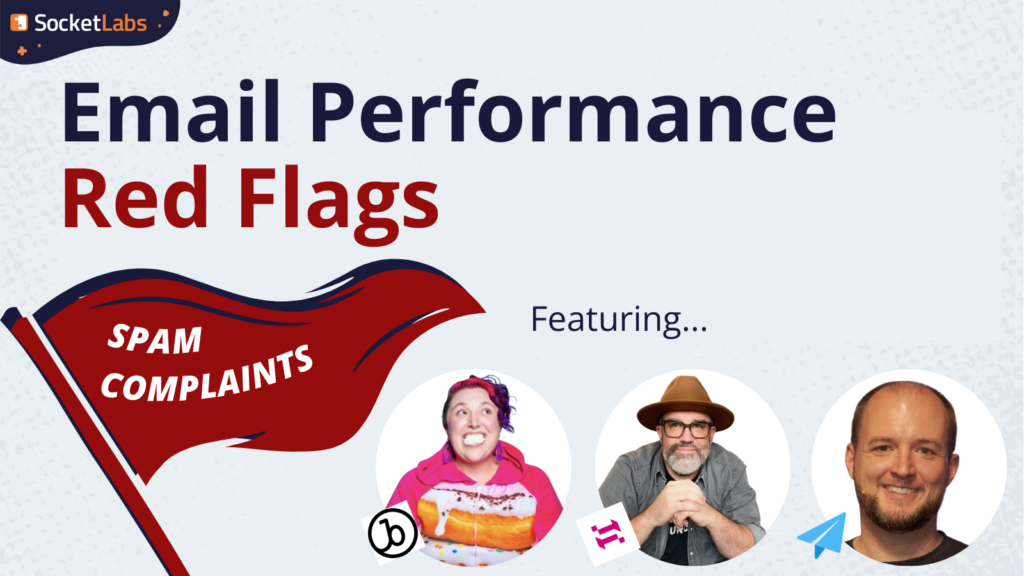
As an email sender, deliverability is key. But getting email successfully to your recipient’s inbox is only half the battle. Have you ever considered what happens after the email is delivered? At the end of the day, getting your recipients to open and read your email is the ultimate goal. As you have likely found, getting email successfully to the recipient can be a challenge in itself, but getting your mail opened and read can be even harder. If you’re looking for the best way to address these setbacks, you’re in the right place. We are going to cover the top 4 ways to improve your email open rates.
The first step to improving your email open rates is knowing what they are. Seems pretty obvious right? In reality, most mailbox providers don’t have an easy solution that allows you to track and monitor your important email metrics like clicks, opens, delivery rates etc. Many high-volume email senders will use an email service provider, like SocketLabs, to provide an intuitive platform that covers your email delivery from head to toe.
Now that you’ve got the important data you need, you should probably know what an open rate actually is, the answer may not be as simple as you thought.
What is an Email Open Rate?
Simply put, an email open rate is the percent of emails you send that are actually opened by the recipient. It seems like a fairly simple concept but there is much more to it. For an email to be recorded as an “open” the email must cover a few basic qualifications. First, the message must be an HTML message type, and second the recipient must allow images to load in their email. This is true because an email’s open status is tracked through the processing of an embedded pixel. If a certain image is loaded in the email, it will send data back to SocketLabs that the image has been loaded, indicating that the email had been opened. It’s important to note that an open is not the same as a “click”, which has more to do with physically clicking through an embedded link that was provided in the email.
What Does the Open Rate of your Email Indicate?
Now that you know what an “open” is and you have the necessary data to track your success as an email sender, you should know the difference between a good versus a bad open rate? So, what is a good open rate for your email? As you might expect, open rates will typically be higher for transactional email compared to marketing email, so this number will vary greatly depending on the type of email you send and a number of other factors like industry, send volume, and IP history. With that being said however, an above average email open rate that is collectively considered great is 50%. But what does this number really indicate? The more people who open and read your email, the more success your email will likely have. You are sending an email with the intent of having your recipients read it – the more people opening and reading it, the more return on your investment!
4 Ways to Improve your Open Rates
No matter what your email open rate looks like right now, these four tips will put you on the right track to increasing your email engagement and overall deliverability.
1. Subject Line Optimization
Assuming you have figured out how to successfully get email to your recipient’s inbox, the next challenge is getting them to open the email. When the email lands successfully in the inbox, the first thing they see is the sender and the subject line. The 5+ words in your subject line could determine whether or not your emails will be opened. There are a couple best practices that you can follow to make the most of your subject line:
Segment your audience – This means you need to recognize the differences in your target audience demographics and plan your subject line accordingly. For example, an email to a college student should have a completely different subject line, than an email sent to a working adult. Even if the product or message of the email is the same across your audiences, the actual content needs to be carefully selected.
Keep it simple – Your subject line is meant to be quick and to the point. Too long, and your recipients will likely scroll right past it. Ideally your subject line should be around 5-7 words long, but this length will vary greatly depending on your unique situation. The type of email you send, the message you’re sending, the industry you’re in – these are all important factors that will play a role in the length of your subject line. No matter where you sit on the spectrum, less is more.
2. Email Design
The way you design your email will keep recipients interested and help build your brands good reputation. The better your reputation, the more your recipients will be opening your mail down the road. When designing the email that you’ll be sending, it’s important to follow a couple best practices:
- The email should be mobile friendly and desktop compatible
- The email should be on-brand so people recognize you easily (This includes things like colors, fonts, images, and tone)
- Your email should not consist of only images, have a good image to text ratio
- Avoid spam trigger words such as “toll-free”, “dear friend”, “risk free”, “special offer”, etc.
- If it’s a marketing email, the email must include a valid physical business address and a clear and conspicuous unsubscribe method to stay compliant with the Federal CAN-SPAM Act
- The text in your email should be simple, to-the-point, and easily consumable
- If you are a well known brand that your recipients are comfortable with, promotions and discounts are a good way to get those messages opened
3. Opt-in Lists
It shouldn’t come as a surprise that your email should be sent only to people who want to receive it. Rather than purchasing unreliable bulk email lists that will ruin your sender reputation and engagement, build opt-in lists through your website or application. Make it easy and enticing for web traffic to join your email list. This can be as simple as making the subscribe button easily accessible, or offering a reward for joining. No matter how you do it, building these lists organically will undoubtedly help get more people to open your email. Building trust and a good relationship with your recipients will be the best tool in getting your messages opened and read.
4. List Hygiene
Recipients who complain, bounce, or have not interacted with your email in a while should be regularly removed from your sending lists. Even if an inactive recipient opted-in a year ago, they should still be removed, as sending to old, inactive users can severely damage your deliverability. This type of list maintenance will not only reduce your risk of bounces, it will also reduce the amount of negative engagement your email receives. List hygiene can go a long way in improving your overall email deliverability. If you’re sending only to the people who interact positively with your email, you will notice a direct increase in open rates as your deliverability increases.
Following with these four recommendations are a good starting point to help you improve your email open rates. Remember that there is a direct correlation between deliverability and open rates, so if you increase one, you increase the other. This means that improving your overall deliverability will inherently increase your open rates as well. We know this is no easy task, fortunately email service providers like SocketLabs, provide you with the necessary tools and infrastructure you need to make the most of your email platform. If you want to learn more about email deliverability, view our email deliverability guide. If you want to jump right in and start sending your email for free through SocketLabs, visit our plans and pricing page.









